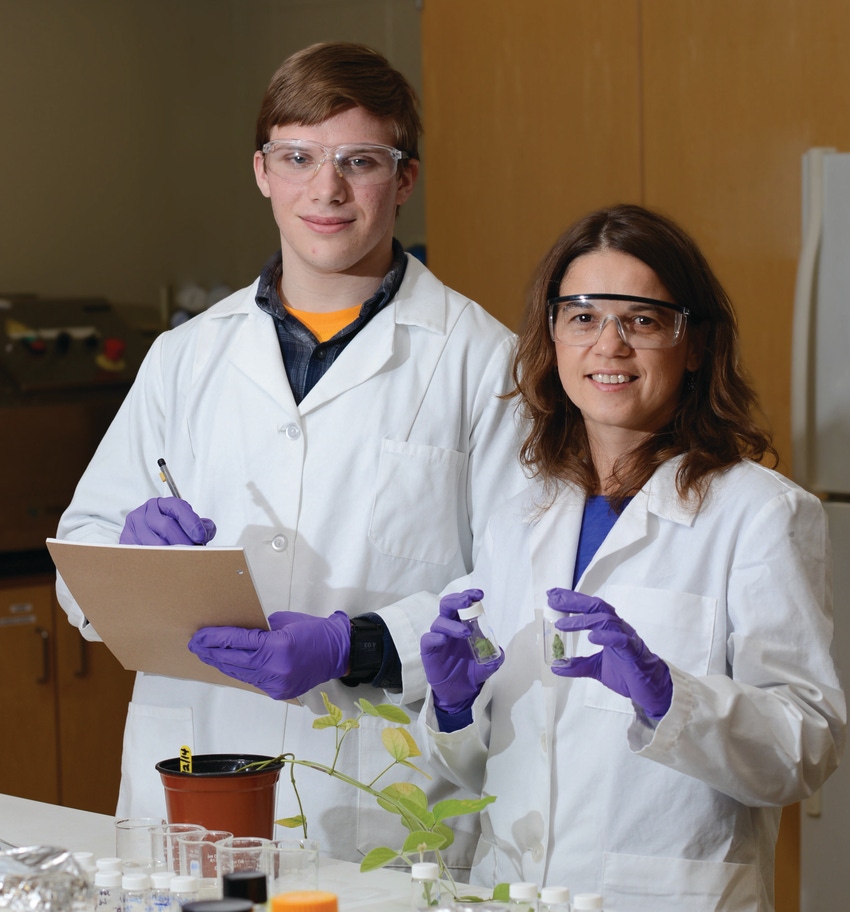August 2, 2015

The soybean looper is a destructive pest on soybeans capable of defoliating fields if left unchecked. It can be difficult to control because of its resistance to many insecticides. LSU AgCenter scientists are looking at a novel way to increase the efficacy of pesticides to better control insects such as the soybean looper using nanotechnology.
Cristina Sabliov, biological engineer, and entomologist Jeff Davis are testing the use of nanoparticles -- particles 1,000 times smaller in width than a human hair -- in insecticides to see if the particles help the chemical better adhere to the leaf tissue and provide better defense against pests. They want to see if the use of nanoparticles loaded with pesticides means farmers can use less chemicals on their crops while making the chemicals more effective.
The researchers are using nanoparticles made of zein, a biodegradable corn-derived protein. They entrapped the insecticide in technical-grade methoxyfenozide within the particles and applied it to leaves of soybean plants.
“The particles were designed to assist in electrostatic binding to the foliage or the roots of the soybean plant and to provide controlled release properties of the entrapped component,” Sabliov said.
The nanodelivery system was tested over two years against the soybean looper. Before they could test it with entrapped pesticide, however, they had to make sure the nanoparticles alone would not harm the soybean looper.
Davis said they fed the loopers a diet with and without nanoparticles and saw no mortality, demonstrating the particles without the insecticide would not hurt the pests.
Next, they looked to see if the nanoparticles would prolong the effectiveness of the insecticide when entrapped in the nanoparticle.
“We sprayed the plants and would feed the leaves to the soybean loopers at three days out, seven days out, up to 42 days,” Davis said.
The insecticide alone is usually effective up to 14 days. But when used with nanoparticles, they saw good control of the soybean looper for 21 days.
The researchers said these results could mean that nanoparticles may help farmers spray less often and spray less of the chemical. But questions still remain on the safety of the nanoparticles.
Kurt Ristroph, a student working in Sabliov’s lab, said they washed the plants sprayed with insecticides entrapped within the nanoparticles to simulate rain and checked to see how long the chemical would stay on the plant. “The results are good. The particles seem to adhere well to leaves and wash out slowly over time.”
The scientists want to see the environmental effects of the nanoparticles before moving forward.
“To extend the applications of nanotechnology to agriculture with the specific purpose of improving pesticide functionality, we have to have a full understanding of the nanopesticide behavior within the plant and soil,” Sabliov said.
You May Also Like




